Again we had a morning tour as part of the trip. We were told that Krakow was the capital before it was moved to Warsaw and that it had survived war largely undamaged so buildings were genuinely old. The city had existed through a number of invasions – Swedish, Prussian, Austrian as well as German. In WW2 the former royal area was taken over by Nazi officials and the wires to the bombs they set to destroy them after they had left were cut by the underground, so they survived, although all the bridges were destroyed.
There were a lot of signs of the recent flooding, but the roads were clear
. We drove past a series of university buildings. About 160000 students study in the city.
We started in the original Jewish sector although now only 200 Jews live in all of Krakow, and there is no kosher food because there is no rabbi. The ghetto had housed 100,000 people in 320 houses. Of the 70,000 sent to the camps 65,000 were killed. About 200 are still alive. Later we saw a new memorial of empty chairs at the site where the Jews gathered with their possessions to get on the trains.
The guide also told us the story of Helena Rubenstein who was a child in a house still existing. She moved to Australia to avoid being married off to a widower, and her mother gave her 20 bottles of face cream. This was popular with her Aussie neighbors so she moved into production. She shifted to the US and sold the business for $8 million before Wall St crashed and bought it back for $2 million afterwards. Her husband was not faithful but the last straw was his affair with Elizabeth Arden, already an enemy, so they divorced
. When Helena was very ill in her 90's Elizabeth said she was about to do the best thing she had ever done (i.e. die), and this made Helena survive another 6 months.
We then drove through the royal area. We were told in mediaeval times 25% of the income for the city came from salt as 1kg salt was worth 1 kg silver. We also heard the dragon legend. A dragon lived under the palace and used to eat 5 girls a week. A shepherd filled a dead sheep with sulphur, the dragon ate the sheep and the sulphur made him so thirsty he drank so much water that he exploded. The shepherd then married the princess and as his name was Krak the city was named Krakow.
The castle was renovated in 1920s but there is also a new statue to replace one removed by the Nazis. Inside we saw 400 year old tapestries still looking like new. The tomb was made of 300kg of silver, replacing one looted which was of silver and gold. The castle/cathedral had had a royal throne which had gone, but the Cardinal’s chair now had the royal canopy over it. One portrait showed a former Queen in her 30 kg wedding gown. She had 2 attendants to help her move yet still fainted twice. There has been 37 coronations in the castle.
We then walked down the "Royal Route" to the main square. We had a 12th century church pointed out and the Cloth Hall, where lots of souvenirs were on sale
. We also saw St Marys’, which dominates the area.
The guide told us that history says the town was under attack and a fireman rang up the stairs to sound the alarm. He was playing a bugle tune when he was cut short by an arrow through his throat. So every hour (24 hrs/day), after the bell rings on the hour, based (now) on an electronic signal from Frankfurt, a fireman plays the bugle, and always stops mid tune at the same place in the music when the original bugler was shot. If he is happy he waves out the window – we waited for 11 am but we did not get a wave. He moves around 4 windows so we heard him again at noon, but he was around the corner. The only time the bugler has been silenced was during the Nazi occupation. As soon as the Nazis departed a bugler rushed up the tower to play and hence announced that the city was free.
The local guide was excellent, being informative with a light touch at times, and the ability to just wait so people closed in on her naturally
. Photo stops were built in with clear meeting times and places afterwards. Anita has the group trained well by now so we were always on time.
We spent the next hour and a half wandering around, having lunch and people-watching. There was a festival atmosphere with a variety of huge dragons being dragged about and also floating around the square. There were also fancy horse and carts taking people for rides, and market stalls, buskers and people in costumes. There are a couple of caches in the square but we didn’t even look because of the crowds. I had bruchetta, wine and sorbet and John had beer and chicken wings at an outdoor café – traditional eh!! The stalls had a lot of amber (the local jewel), crystal and wood. There were some nice pieces but they were not cheap and we have a long way to carry anything.
The best busker was a puppeteer. He had marionettes of Tina Turner, Celine Dion, Elvis and Michael Jackson who 'sang’ to music and danced appropriately. We saw him again before we met Andy, and his Michael Jackson routine was almost obscene (pelvic thrusting etc..) but very, very funny and very, very good.
At 12.30 we met Anita (our guide) and went to the bus to drive to the Salt Mines. They may sound very Soviet, but they had been there for many centuries.
Ailsa had told us to make sure we did the salt mine tour although we discovered later her own son, living 1 hour away, has not been yet
. It is a listed UNESCO World Heritage site. You need a guided tour as only part of the 300km of tunnels are on the tourist route and it would be easy to get lost.
We first went 90 m down in a cramped lift – 8 people and only just enough room to open the inward opening door at the bottom. The lifts were stacked on top of each other. Anyway the whole party got to the bottom in one trip
The tour is a mix showing the workings of the mine and the salt sculptures. When the salt was mined, leaving large cavities, miners carved shapes in their spare time. The art work was done mainly by 4 men, one still alive. The first 2 were father and son and the third, the youngest, had his talent recognised and was sent to Art school by the mine. The mine is no longer working, except for ongoing work to keep it safe, and about 2 km or less than 1/100th of it is part of the tourist route.
We saw old mine equipment, mainly wood and rope
. In one part horses drove the wheel that lifted the salt to the surface. The horses were stabled below for their working life, which was reputedly long because of the health properties of the salt. We were encouraged to lick the walls – or wipe them and lick our fingers. There was definitely salt there and the underground stream was incredibly salty.
Salt could be seen on some of the surfaces of the large chambers the miners called spaghetti and other shapes known as cauliflower. Although it seemed like we were in caves, all caverns had been dug out by the miners over the centuries. On huge cavern had taken 30 years to mine.
The initial carving dates to the 17th century but most is from the end of the 19th century. There were statues of Goethe, and Copernicus who both visited the mine when it was in production. There were also carvings representing life in the mine.
The most impressive art work was in the various chapels
. There were very old angel figures that had deteriorated over time. The main chapel is used for weddings and has carvings of various biblical scenes including the last super, done by the third miner after his art training. We turned down the offer of a group photo here.
There were chandeliers in many of the chapels made with salt crystals. The crystal part of the mine is now closed unfortunately. Imported pink salt is used in a few displays. The newest carver has carved John Paul II, who had visited the mine. It is incredibly life-like.
Thee end of the tour takes you through shops, a restaurant and a ball room, big enough to fly a hot air balloon in. We then saw a light and music display by a huge underground lake. There was even an internet connection in the last chamber – and souvenirs. JB sent Jennifer an underground email.
By then we were 150 m underground having gone down a series of stairs including some made of salt
. We returned to the surface by elevator, again it was a very cosy squeeze.
Our guide was good with a number of rehearsed jokes. She was possibly Japanese but we had no problem following her explanations.We have no photos because my camera was unreliable and not very flash - and you have to pay to get a photo taking pass.
We were dropped back off in the city and after changing money we had a coffee, watched the buskers than rang Andy Gillin. He and his fiancé Justina met us and we wlked around the square and then to Florians Gate. We found a pink piano advertising the Chopin festival for his 200th anniversary. JB had his picture taken doing an Elton John impersonation on it. They then helped us buy a camera. Both of ours had been giving us problems so now we have a new compact camera (happy birthday John).
Justina found a good place for tea, but it didn’t take credit cards so we popped around the corner for cash. It was a nice meal and ‘sort of’ traditional Polish. CB had a glass of mead which was nice if a bit sweet. We took mutual photos and Justina showed us photos of her engagement ring. We then bussed back to the hotel to sort our photos and blog and did some packing for tomorrow.
A Krakow rendezvous
Saturday, June 05, 2010
 Krakow, Southern Poland, Poland
Krakow, Southern Poland, Poland
Other Entries
-
1The Starting Line
May 2214 days prior Nelson, New Zealandphoto_camera1videocam 0comment 10
Nelson, New Zealandphoto_camera1videocam 0comment 10 -
2Our last stop in NZ
May 2214 days prior Auckland, New Zealandphoto_camera1videocam 0comment 0
Auckland, New Zealandphoto_camera1videocam 0comment 0 -
3Beijing or bust...
May 2313 days prior Beijing, Chinaphoto_camera7videocam 0comment 2
Beijing, Chinaphoto_camera7videocam 0comment 2 -
4On the Wall
May 2412 days prior Beijing, Chinaphoto_camera12videocam 0comment 4
Beijing, Chinaphoto_camera12videocam 0comment 4 -
5Hitting the streets of Beijing
May 2511 days prior Beijing, Chinaphoto_camera13videocam 0comment 0
Beijing, Chinaphoto_camera13videocam 0comment 0 -
6Goodbye Beijing hello Cologne
May 2610 days prior Beijing to Cologne, Chinaphoto_camera3videocam 0comment 1
Beijing to Cologne, Chinaphoto_camera3videocam 0comment 1 -
7A visit to the Dom
May 279 days prior Cologne, Germanyphoto_camera11videocam 0comment 1
Cologne, Germanyphoto_camera11videocam 0comment 1 -
8Eau de Cologne
May 288 days prior Cologne, Germanyphoto_camera5videocam 0comment 0
Cologne, Germanyphoto_camera5videocam 0comment 0 -
9Beer and Chocolate
May 297 days prior Cologne, Germanyphoto_camera8videocam 0comment 2
Cologne, Germanyphoto_camera8videocam 0comment 2 -
10Training to Frankfurt
May 306 days prior Frankfurt, Germanyphoto_camera5videocam 0comment 2
Frankfurt, Germanyphoto_camera5videocam 0comment 2 -
11"Ich bin ein Berliner"
May 315 days prior Berlin, Germanyphoto_camera11videocam 0comment 4
Berlin, Germanyphoto_camera11videocam 0comment 4 -
12Undercover in Berlin
Jun 014 days prior Berlin, Germanyphoto_camera11videocam 0comment 2
Berlin, Germanyphoto_camera11videocam 0comment 2 -
13Poles apart
Jun 023 days prior Warsaw, Polandphoto_camera7videocam 0comment 0
Warsaw, Polandphoto_camera7videocam 0comment 0 -
14Markets and memories
Jun 032 days prior Warsaw, Polandphoto_camera16videocam 0comment 0
Warsaw, Polandphoto_camera16videocam 0comment 0 -
15Personal thoughts on Warsaw
Jun 041 day prior Krakow, Polandphoto_camera0videocam 0comment 3
Krakow, Polandphoto_camera0videocam 0comment 3 -
16To Krakow via Auchwitz
Jun 041 day prior Krakow, Polandphoto_camera10videocam 0comment 0
Krakow, Polandphoto_camera10videocam 0comment 0 -
17A Krakow rendezvous
Jun 05 Krakow, Polandphoto_camera13videocam 0comment 1
Krakow, Polandphoto_camera13videocam 0comment 1 -
18Romance on the Danube
Jun 061 day later Budapest, Hungaryphoto_camera10videocam 0comment 0
Budapest, Hungaryphoto_camera10videocam 0comment 0 -
19At large in Budapest
Jun 072 days later Budapest, Hungaryphoto_camera13videocam 0comment 1
Budapest, Hungaryphoto_camera13videocam 0comment 1 -
20A waltz in Vienna
Jun 083 days later Vienna, Austriaphoto_camera10videocam 0comment 2
Vienna, Austriaphoto_camera10videocam 0comment 2 -
21Vienna Paradox
Jun 094 days later Vienna, Austriaphoto_camera0videocam 0comment 0
Vienna, Austriaphoto_camera0videocam 0comment 0 -
22Proceeding to Prague
Jun 094 days later Prague, Czech Republicphoto_camera6videocam 0comment 1
Prague, Czech Republicphoto_camera6videocam 0comment 1 -
23The beauty of Prague
Jun 105 days later Prague, Czech Republicphoto_camera17videocam 0comment 0
Prague, Czech Republicphoto_camera17videocam 0comment 0 -
24Munchen mini stay
Jun 116 days later Munich, Germanyphoto_camera8videocam 0comment 1
Munich, Germanyphoto_camera8videocam 0comment 1 -
25The Romantic Road
Jun 127 days later Frankfurt, Germanyphoto_camera13videocam 0comment 0
Frankfurt, Germanyphoto_camera13videocam 0comment 0 -
26Meeting Margo in Marburg
Jun 138 days later Marburg, Germanyphoto_camera6videocam 0comment 0
Marburg, Germanyphoto_camera6videocam 0comment 0 -
27Out and about in Marburg
Jun 149 days later Marburg, Germanyphoto_camera6videocam 0comment 0
Marburg, Germanyphoto_camera6videocam 0comment 0 -
28The football in Marburg
Jun 1510 days later Marburg, Germanyphoto_camera2videocam 0comment 0
Marburg, Germanyphoto_camera2videocam 0comment 0 -
29Exploring Hesse
Jun 1611 days later Marburg, Germanyphoto_camera14videocam 0comment 1
Marburg, Germanyphoto_camera14videocam 0comment 1 -
30South to the Alsace
Jun 1712 days later Mittelbergheim, Francephoto_camera6videocam 0comment 1
Mittelbergheim, Francephoto_camera6videocam 0comment 1 -
31Vins des Pay
Jun 1813 days later Mittelbergheim, Francephoto_camera6videocam 0comment 1
Mittelbergheim, Francephoto_camera6videocam 0comment 1 -
32Strasbourg and Beyond
Jun 1914 days later Mittelbergheim, Francephoto_camera14videocam 0comment 0
Mittelbergheim, Francephoto_camera14videocam 0comment 0 -
33Back to Bodensee
Jun 2015 days later Meersburg (Bodensee), Germanyphoto_camera5videocam 0comment 0
Meersburg (Bodensee), Germanyphoto_camera5videocam 0comment 0 -
34Exploring Bodensee
Jun 2116 days later Meersburg (Bodensee), Germanyphoto_camera15videocam 0comment 0
Meersburg (Bodensee), Germanyphoto_camera15videocam 0comment 0 -
35Tratorria da Nando
Jun 2217 days later Barcarola, Italyphoto_camera9videocam 0comment 1
Barcarola, Italyphoto_camera9videocam 0comment 1
Comments
2025-05-23
Comment code: Ask author if the code is blank

 Krakow, Southern Poland, Poland
Krakow, Southern Poland, Poland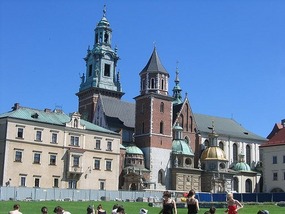
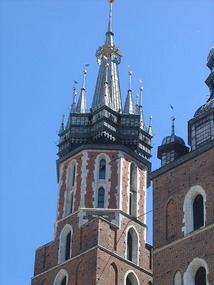
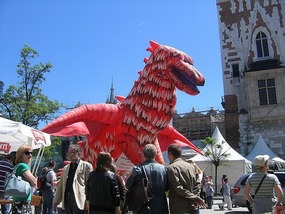
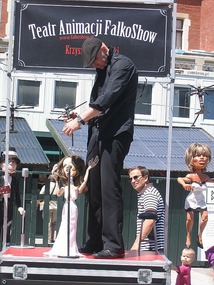
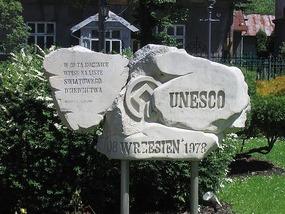
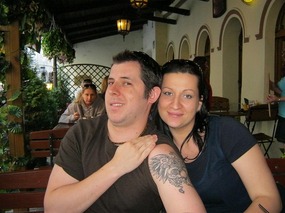
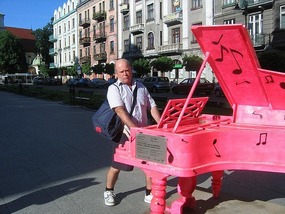
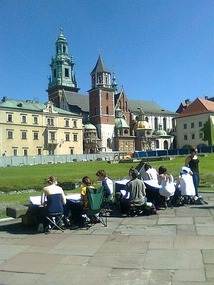









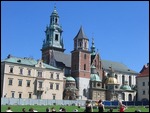
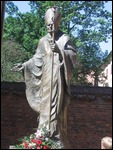
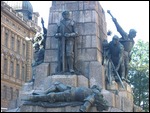
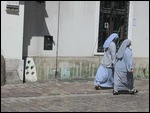
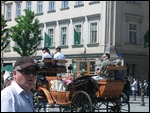
Ailsa
2010-06-09
Love the pink piano, Elton. Love the tattoo, Andy.